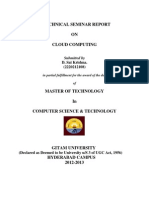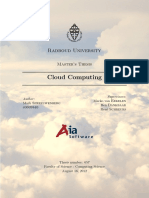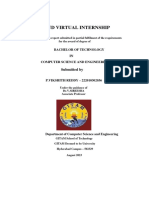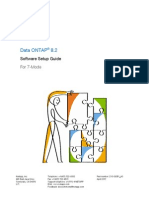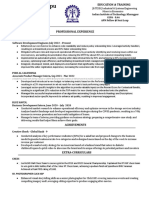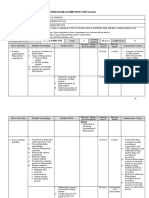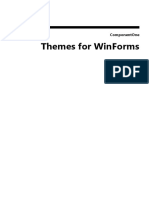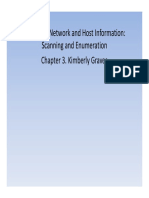CLOUD BASED
STUDENTS PORTAL
Proposal
PROJECT OVERVIEW
Slide 1 :Title: Cloud-Based Student Portal
This project involves the development of a student portal that operates in the cloud.
. The portal will provide students with easy access to their academic information, course materials, and other
essential resources. By utilizing cloud technology, we aim to enhance accessibility and improve the overall user
experience for students.
‘ Our project is a cloud-based portal designed to enhance student engagement and streamline academic
administration. It provides secure authentication, personalized dashboards, academic record tracking, event
calendars, and discussion forums.
. The portal is hosted on DigitalOcean’s IaaS and leverages cloud scalability, robust security, and flexible
resource allocation.
. This solution modernizes student services and supports future enhancements.
Contact:
Your Name…………………………………………..
Student ID: …………………………………………..
1
� Slide 2 : DigitalOcean's IaaS TCO Breakdown
Our DigitalOcean IaaS TCO analysis has been conducted for three years and shows the
following:
• Year 1: Covers initial setup (server instance, storage, bandwidth
$150 .
• Year 2: For maintenance, backups, and security updates.
$100
• Year 3: For ongoing support and scaling needs.
$100
Total 3-Year Approximately $350
Cost:
Optimal performance can be guaranteed by fully customizing and controlling the student portal with this cost-
effective approach.
2
� Slide 3 :The IaaS TCO Breakdown for DigitalOcean
Digital Ocean IaaS TCO analysis conducted over three years reveals the following:
In Year Slide 3:
Alternative TCO Analysis (SaaS Option), $150 is spent on the initial setup, which includes server instance, storage,
and bandwidth.
For comparison, our SaaS option is estimated at:
• Year 1: Subscription fee with add‑on services.
$200
• Year 2: Consistent recurring cost.
$200
• Year 3: Maintained service fee.
$200
Total Cost Approximately $600
3‑Year
The Solution
Direct technical oversight can be reduced by using SaaS, but it comes with higher costs and limited customization
options.
This comparison shows that the IaaS solution not only saves money but also meets our specific configuration
needs more effectively.
3
� Slide 4: Non-Monetary Factors and Conclusion
Beyond cost, key factors include
.IaaS provides full configuration control and seamless scalability for its usability and flexibility.
1. Security and
Support: Regular updates and direct vendor support from Digital Ocean enhance reliability.
2. Adaptability: .The IaaS model is well-suited for future enhancements, such as integrating advanced
tutoring tools
.The recommendation for Digital Ocean IaaS is based on its cost savings ($350 vs. $600) and superior control.
.The next stage involves completing the cloud setup, launching a pilot, and gathering information. RationaleSlide
4
� Slide 5 : Final Recommendations & Next Steps
Our thorough analysis of the Total Cost of Ownership (TCO) and qualitative aspects shows that the Digital Ocean
Infrastructure-as-a-Service (IaaS) model is the most favorable option for our project.
Its competitive three-year costs and strong customization capabilities offer a flexible, secure, and scalable platform
for the Cloud-Based Student Portal.
Immediate next steps include:
Finalizing the server configuration, implementing security protocols, and commencing pilot testing. Below, we
present a detailed overview of our project methods, including
1. The development approach
2. A proposed timeline of events
3. The reasoning behind our recommended project development strategy



































